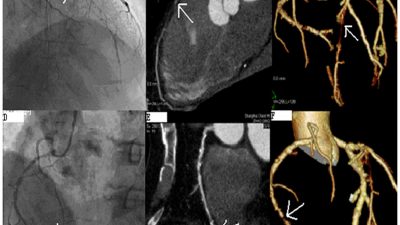We know that reducing variability improves quality and reduces cost. In this week’s Quality Matters, we break down several research studies from the past 15 years to take a deeper look at a quality accreditation process and its impact on variability in cardiology services. We’ve identified studies that analyze accreditation engagement and motivation, critical success factors for quality assurance, and Washington State’s approach to reducing variability via its Surgical Clinical Outcomes Assessment Program (2005).
Limiting variability – of procedures, protocols, communication, language, etc. – is critical for any quality improvement effort. Consistency makes it easier to identify gaps, measure the effects of intentional change, and inform quality improvement initiatives. Illustrating the many component parts of QI – from the predicating factors that get the ball rolling, to the long-term institutional effects on care delivery – we’ve tried to offer insight into how quality improvement initiatives should be designed in order to be most effective.
We also examine why accreditation, in a broad sense, is the most comprehensive and effective method for ensuring quality care and patient safety, reducing cost through limiting variability, and providing ongoing guidance to institutions in their pursuit of best practices, continued innovation, and quality improvement.
Motivations for Accreditation Engagement, and Subsequent Effects
This study from 2010 evaluated staff motivations for participating in an accreditation review, and the subsequent benefits of accreditation participation at a large public teaching hospital in Australia.
A thematic analysis of interview data identified that frontline personnel, managers, and senior staff prioritized different elements of the accreditation process. Respectively, these elements were 1) rationales for survey questions and evaluation criteria; 2) the holistic contributions of staff throughout the accreditation process; and 3) the “constructive summation conference” and written report provided by surveyors.
“Accreditation offered [staff] opportunities to learn; it legitimized and further enabled their development as quality and safety champions […] created networks of like-minded collaborators across internal organizational structures […] enhanced the organizations’ internal social capital, and promoted a quality and safety culture characterized by alliances and a shared desire for improvement.”
Critical Success Factors for Quality Assurance in Healthcare Organizations
Diving deep into the methods and rationales behind effective quality assurance measures, programs, and protocols, this article enumerates a number of techniques for ensuring that quality assurance efforts have a tangible and significant effect on the quality of care being delivered by an institution.
Notably, this article does a fantastic job of suggesting how patient satisfaction is best evaluated, and how this information can be leveraged to ameliorate an institution’s overall quality improvement processes.
Competency maps, the differences between “care continuity” and coordinated care, and useful tools for creating professional development programs are all highlighted in this fantastic broad overview of quality improvement/assurance at a number of healthcare organizations. The necessity of third party validation of these efforts is similarly emphasized as critical to success.
SCOAP – Washington State’s Approach to Surgical Variability
Taking a close look at the Surgical Clinical Outcomes Assessment Program (SCOAP), this article observes that “the perception and the reality of [surgical] variability have undermined confidence in the healthcare system,” and examines feasible quality improvement approaches to re-center care delivery, overcoming the variability and confidence-gap currently affecting the healthcare system as a whole.
“Analysis of ‘complications’ (using administrative codes) following procedures… reveals that an estimated $30 million/year compromising 1200 complications/year and 7,000-8,000 hospital days/year could be avoided” if variability was minimized.
Using a third-party to facilitate the “candid exchange of sensitive performance data” is a critical component of SCOAP’s internal structure. Additionally, this overview of SCOAP’s practices highlights that “process analysis may be a more productive approach to QI projects than outcomes-oriented approaches,” due to the fact that process variations provide more actionable measures for healthcare institutions than an analysis of outcomes alone, which risks compelling institutions to “reinvent the wheel.”
Quality Matters Commentary: Motivations Behind Accreditation, its Impact on Variability in Cardiology, and Supportive Process Development
The study which measured the motivations of various stakeholders in the accreditation process highlights the truly multidisciplinary nature of healthcare, not only through the coordinated approach to care delivery, but through the unique perspectives, concerns, and benefits that accreditation provides to the constituent groups of providers making up a health care team.
At ACE, we have worked to understand the purpose and benefit of accreditation from each of these unique perspectives in order to ensure engagement across the entire spectrum of an institution’s staff and leadership. This engagement is critical to achieving the goals accreditation outlines. We continually review and adjust our own processes, so that this engagement is realized.
The last two articles make clear that quality improvement measures need to focus on more than clinical outcomes alone. Quality improvement efforts should be built with an acute awareness of professional competencies, and always emphasize the reduction of variability, which is responsible for unnecessary healthcare costs for patients and providers alike. Having a third party to facilitate the accomplishment of quality improvement initiatives is likewise critical to their success.
We recognize these facts: that a holistic understanding of an institutions processes, staff, and leadership is necessary to offer effective guidance; and that we are there to facilitate the improvement of health care delivery for the institutions with whom we work. ACE acknowledges that there is no “ceiling” for quality, and that every institution should be continually working towards a higher quality delivery of care. This is the crux of our work: raising the “floor” to assist all institutions in this universal, necessary pursuit.
Read more on how ACE can make a difference for your organization »












